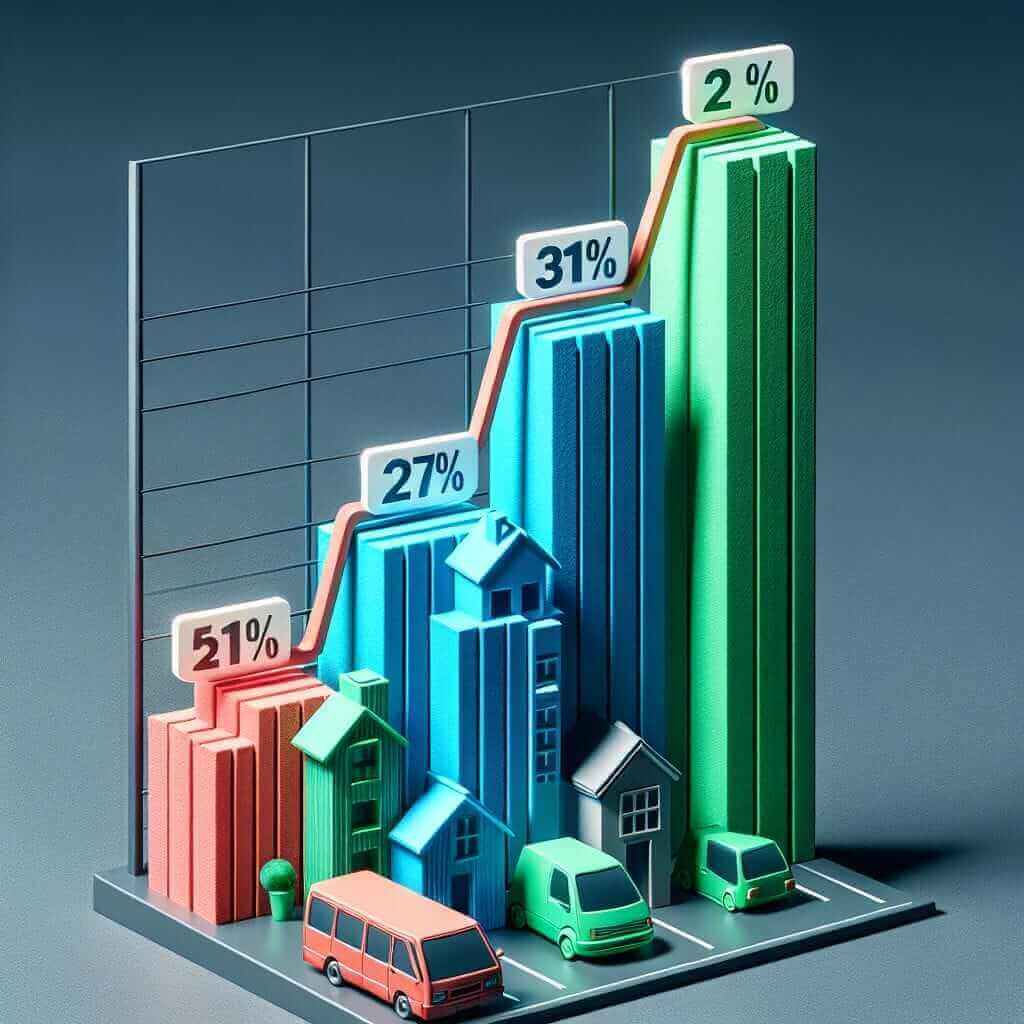Energy efficiency improvements have become increasingly essential in various sectors over the last two decades. Whether you’re preparing for the IELTS Writing Task 1 or simply interested in the evolution of energy efficiency, understanding this topic can be beneficial. This term appears frequently in various contexts, making it a valuable subject to study.
Typically, IELTS Writing Task 1 involves describing and interpreting data presented in various forms like charts, graphs, and tables. To help you practice, we’ll consider a specific case study on energy efficiency improvements from 2000 to 2023.
Sample Tasks
Here are some sample tasks related to this topic:
- The chart below shows improvements in energy efficiency in residential, industrial, and transportation sectors from 2000 to 2023.
- The table below illustrates changes in energy efficiency across different sectors from 2000 to 2023.
- The graphs below depict advancements in energy efficiency in various industries over the period from 2000 to 2023.
For this guide, we’ll focus on the first task.
Data Representation
Let’s imagine a bar chart showing improvements in energy efficiency (% increase) in the residential, industrial, and transportation sectors from 2000 to 2023.
| Year | Residential | Industrial | Transportation |
|---|---|---|---|
| 2000 | 10% | 15% | 5% |
| 2005 | 20% | 25% | 10% |
| 2010 | 35% | 40% | 20% |
| 2015 | 50% | 55% | 35% |
| 2020 | 65% | 70% | 50% |
| 2023 | 75% | 80% | 65% |
 Energy Efficiency Improvements by Sector
Energy Efficiency Improvements by Sector
Task Analysis
To write about this task, follow these steps:
- Introduction: Mention what the chart illustrates.
- Overview: Highlight the key trends and notable points.
- Details: Describe specific data points and trends in more detail.
Sample Writing
The bar chart illustrates the percentage increase in energy efficiency across three sectors—residential, industrial, and transportation—from 2000 to 2023.
Overall, there has been a substantial improvement in energy efficiency in all sectors over the 23-year period. The industrial sector consistently shows the highest improvements, followed by the residential sector, while the transportation sector, although improved, lags behind the other two.
In 2000, the industrial sector had an energy efficiency improvement of 15%, which then grew steadily to 80% by 2023. Similarly, the residential sector saw an increase from 10% in 2000 to 75% in 2023. Although the transportation sector started with a minimal 5% improvement in 2000, it experienced a significant rise, reaching 65% by 2023.
Specifically, the most notable jumps occurred between 2010 and 2015, where the industrial efficiency increased by 15%, the residential by 15%, and the transportation by 15%. This indicates a period of rapid improvement in energy-saving technologies and policies.
In conclusion, while all sectors have shown significant progress in energy efficiency from 2000 to 2023, the industrial sector remains the leader, followed by residential and then transportation sectors.
Word Count: 206
Writing Tips
When writing about this topic, keep the following in mind:
- Clarity and Structure: Structure your response clearly with an introduction, overview, and detailed paragraphs.
- Comparative Language: Use comparative and superlative forms to highlight differences and trends (e.g., “more significant”, “the highest”).
- Accuracy: Ensure data accuracy and proper unit mention.
- Consistent Tense: Use the past tense for historical data but can mix with the present perfect to show continuous relevance.
Vocabulary
Here are some useful words and phrases:
- Improve (verb) /ɪmˈpruːv/: To enhance or make better.
- Efficiency (noun) /ɪˈfɪʃnsi/: The ability to accomplish a task with minimal waste of time and resources.
- Sector (noun) /ˈsɛktər/: A distinct area or part of a country’s economy or business.
- Substantial (adj) /səbˈstænʃl/: Considerable importance, size, or worth.
- Consistent (adj) /kənˈsɪstənt/: Unchanging in nature, standard, or effect over time.
- Notable (adj) /ˈnəʊtəbl/: Worthy of attention or notice; remarkable.
- Trend (noun) /trɛnd/: A general direction in which something is developing or changing.
- Rapid (adj) /ˈræpɪd/: Happening in a short period of time.
- Comparison (noun) /kəmˈpærɪsən/: The act of comparing two or more things.
- Percentage (noun) /pərˈsɛntɪdʒ/: A rate, number, or amount in each hundred.
Conclusion
Writing about energy efficiency improvements in different sectors requires clear structure, comparative language, and accurate data interpretation. By following these guidelines and practicing with sample tasks, you can aim to achieve a high band score in your IELTS Writing Task 1. Always remember to interpret the data precisely and convey the information clearly to the reader.


